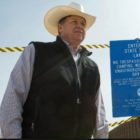2019 legislative session
New direction, and infusion of money, seen for criminal justice system
|
Lawmakers are hopeful that 2019 brings an opportunity to significantly overhaul major parts of the New Mexico criminal justice system, after what one key state senator called a “lost decade” that saw myriad ideas but scant action. Bills are expected to address chronically high crime rates across the state, with a focus on speedier justice in cases involving violence and more lifeboats for people whose lesser crimes have saddled them with the stigma of a criminal record. There’s talk of a massive “omnibus” bill that would feature changes to New Mexico’s probation and parole systems, reparations for crime victims, the way law enforcement uses eyewitness testimony to seek convictions and several other laws. Then there are the reforms that, in years past, have found support from both political parties but ultimately met the veto pen of Gov. Susana Martinez, a former prosecutor who for eight years stuck to her belief that New Mexico needed tougher penalties for lawbreakers, but largely stiff-armed proposals to address systemic injustices. Those shifts — likely to be proposed in individual bills — would include limiting the use of solitary confinement in the state’s prisons and jails, creating a pathway for some offenders to have their criminal records wiped clean after a period of time and prohibiting private-sector employers from inquiring about job applicants’ past convictions in most instances.








